remote work: asynchronous communication
description: a work arrangement where team members communicate without the expectation of immediate response
9 results
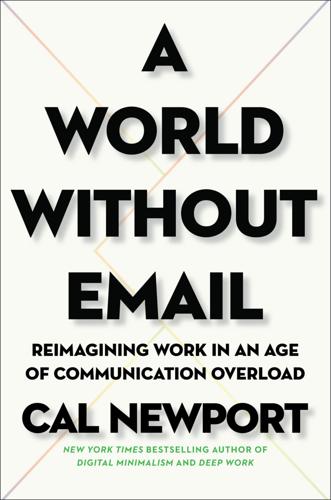
A World Without Email: Reimagining Work in an Age of Communication Overload
by
Cal Newport
Published 2 Mar 2021
Neil Postman, Amusing Ourselves to Death: Public Discourse in the Age of Show Business (New York: Penguin, 1985), 51. 17. For more on this history, see chapter 1 of my previous book: Cal Newport, Digital Minimalism: Choosing a Focused Life in a Noisy World (New York: Portfolio/Penguin, 2019). 18. Blake Thorne, “Asynchronous Communication Is the Future of Work,” I Done This (blog), June 30, 2020, http://blog.idonethis.com/asynchronous-communication/. 19. Radicati Group, Inc., Email Statistics Report, 2015–2019, Palo Alto, CA, March 2015. 20. Michael J. Fischer, Nancy A. Lynch, and Michael S. Paterson, “Impossibility of Distributed Consensus with One Faulty Process,” Journal of the ACM 32, no. 2 (April 1985): 374–82. 21.
…
This might be fine for conveying static information, but it’s clearly an impractical means to efficiently coordinate or share time-sensitive news. What the rise of the large office really needed—a productivity silver bullet of sorts—was some way to combine the speed of synchronous communication with the low overhead of asynchronous communication. Which brings us back to the CIA. This is exactly what they were trying to achieve with their pneumatic tube system. Their electromechanically routed, vacuum-driven capsules were the equivalent of a turbocharged mail cart: I can now asynchronously deliver you a message within minutes instead of hours.
…
By 1994, it’s the “killer app” of the decade and the foundation of a half-billion-dollar software industry. That’s about as close to an overnight transformation as you’re likely to find in the history of commercial technology adoption. We shouldn’t be surprised that this tool spread so fast. As I established, it solved a real problem—the need for high-speed asynchronous communication—and did so in a manner that was relatively inexpensive and easy to master.8 But it’s important to remember that there’s nothing fundamental about email as a tool that demands that we use it constantly. One could imagine an alternative history in which email simplified existing communication that used to occur over voicemail and memos, but office work otherwise remained the same as it had been in the mid-1980s.
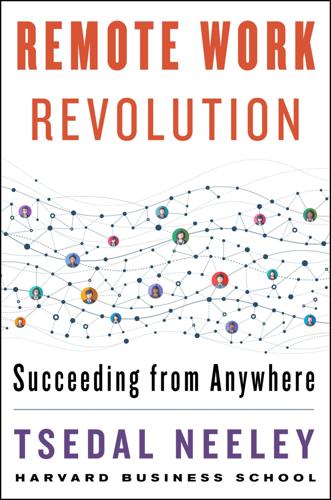
Remote Work Revolution: Succeeding From Anywhere
by
Tsedal Neeley
Published 14 Oct 2021
Researchers have found that teams working on “nonroutine” tasks such as drafting a report benefit from technology that uses “task knowledge awareness” so they can understand “who is doing what” to track, for example, who is responsible for writing which section of the report, and various due dates for delivery and revision. Lean, asynchronous communications work best for record keeping and scheduling. By contrast, when teams engage in activities that involve multiple languages or time zones, technologies that increase presence awareness (feeling present and interactive) such as video calls enhance performance. Put simply, different technologies affect team goals and performance outcomes.
…
While observing the work practices of project managers, my colleagues and I noticed that everyone (not only Greg) employed a redundant communication strategy, although exactly how they did so differed based on whether the communicator had formal authority or not. We found that people used two distinct forms of redundant communication to mobilize team members. Those who did have formal authority over their team members reactively followed an initial, often asynchronous communication attempt when their message that a threat existed failed to rapidly produce any change in employees’ behavior. They would then launch a second communication, often synchronous, to make sure that their team understood that a threat really did exist. For example, a potential setback tended to result in short, “delayed” communications (such as email) intended to realign the work of employees to confront the new challenges.
…
Depending on their degree of authority, people can sequence the media they use to communicate redundantly—from synchronous to asynchronous or vice versa—thereby conveying the importance of a message or making a call to immediate action. Don’t forget to ask. Cross-national teams need to take into account cultural and language differences. Preferences for synchronous or asynchronous communication differ by culture and common language competence. Close social distances. Social tools help far-flung coworkers connect, share knowledge, collaborate, and innovate more effectively, as well as reduce work duplication and free up resources to focus elsewhere where needed. Nonwork communication on social tools lubricates work communication, and both leaders and employees should engage in social chatter on company-wide social tools.
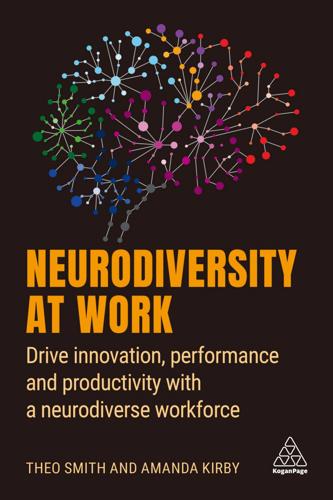
Neurodiversity at Work: Drive Innovation, Performance and Productivity With a Neurodiverse Workforce
by
Amanda Kirby
and
Theo Smith
Published 2 Aug 2021
‘Water cooler’ conversations – again the value of this to gaining an understanding of workplace politics and what are the common ways for social interaction will be lost completely when working remotely. This is the micro-chatter and some of the gossip. Asynchronous communication is any type of communication that includes a lag between when the party imparting the information sends the message, and when the party receiving the message interprets it. Asynchronous communication is generally not in person, and it’s usually unscheduled (although there are exceptions, such as using an email marketing tool to schedule sending an email at a certain time). Examples of asynchronous communication methods: Email. Letters or other direct mail. Project management tools. Company wikis and workspaces.
…
Is your line manager looking so busy that it’s hard to approach them or is it the right time because they are chatting to others? The challenge if you are working from home is that you don’t have any clues to go on and so rules of engagement and communication need to be more explicit for both synchronous and asynchronous communication. Synchronous communication is communication that happens in ‘real time’ – two or more parties are exchanging information in the same moment with one another. Synchronous communication can be in-person or virtual, scheduled or impromptu. People use different actions for different tasks and will have their own style.
…
What expertise have you in-house or will you need professional expertise to help you, eg occupational psychology, workplace assessment or strategy coaching, specialist support organization? How much time, on average, will interns or placements spend in the workplace and where will that be? Is this remote working or at a fixed place of work, or a mix of the two, and what is the actual structure of a working week? Is this flexible and may it change over time? How will the interns/placements be selected? What criteria will you use? Are you going to be specific that this is people with autism for example, and if so will you require them to be diagnosed?
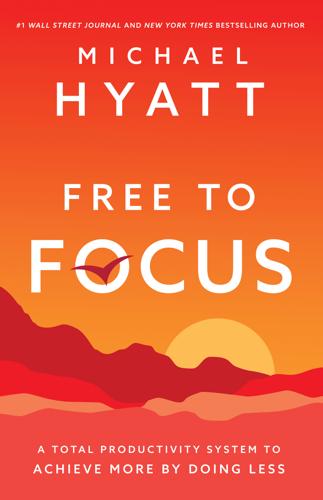
Free to Focus: A Total Productivity System to Achieve More by Doing Less
by
Michael Hyatt
Published 8 Apr 2019
I first started thinking about the distinctions between instant and delayed communication in 2017 when noticing the negative effect of instant communication on my own team. See Allan Christensen, “How Doist Makes Remote Work Happen,” ToDoist Blog, May 25, 2017, https://blog.todoist.com/2017/05/25/how-doist-works-remote; Amir Salihefendic, “Why We’re Betting Against Real-Time Team Messaging,” Doist, June 13, 2017, https://blog.doist.com/why-were-betting-against-real-time-team-messaging-521804a3da09; and Aleksandra Smelianska, “Asynchronous Communication for Remote Teams,” YouTeam.io, https://youteam.io/blog/asynchronous-communication-for-remote-teams. 5. David Pierce, “Turn Off Your Push Notifications. All of Them,” Wired, July 23, 2017, https://www.wired.com/story/turn-off-your-push-notifications/. 6.

It Doesn't Have to Be Crazy at Work
by
Jason Fried
and
David Heinemeier Hansson
Published 1 Oct 2018
Then we saw how projects never seemed to end. So we started time-boxing at three months. We found that was still too long. So we tried even shorter times. And we ended up here, in six-week cycles. We iterated our way to what works for us. We’ll talk all about this in the book. We didn’t just assume asynchronous communication is better than real-time communication most of the time. We figured it out after overusing chat tools for years. We discovered how the distractions went up and the work went down. So we figured out a better way to communicate. We’ll talk all about this in the book. We didn’t launch with the benefits we have today.
…
The important part isn’t really whether you can afford to pay salaries based on the top city in your industry or at the top 10 percent of the market, but that you keep salaries equal for equal work and seniority. This gives everyone at the company the freedom to pick where they want to live, and there’s no penalty for relocating to a cheaper cost-of-living area. We encourage remote work and have many employees who’ve lived all over the world while continuing to work for Basecamp. We don’t pay traditional bonuses at Basecamp, either, so our salaries are benchmarked against other companies’ salaries plus bonus packages. (We used to do bonuses many years ago, but we found that they were quickly treated as expected salary, anyway.
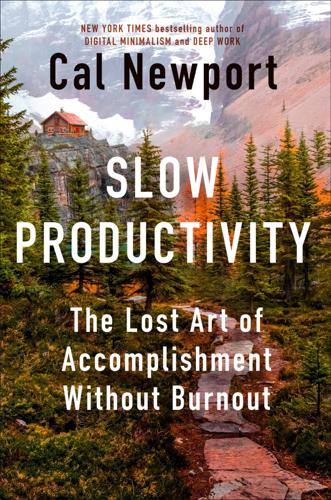
Slow Productivity: The Lost Art of Accomplishment Without Burnout
by
Cal Newport
Published 5 Mar 2024
If much of your perceived busyness comes from talking about tasks instead of actually executing them, you might be less overloaded than you realize. In other words, if you can reduce the footprint of these conversations, the pile of actual, concrete obligations that remains might not be so forbidding. A direct strategy for reducing collaboration overhead is to replace asynchronous communication with real-time conversations. Consider my earlier example in which an ambiguous request from a colleague led to a long thread of back-and-forth messaging involving three different parties. If all three people were instead in the same room or video call at the same time, the task could have been perfectly clarified in just a few minutes of discussion.
…
GO TO NOTE REFERENCE IN TEXT “Stop treating us”: AppleTogether, “Thoughts on Office-Bound Work,” appletogether.org/hotnews/thoughts-on-office-bound-work.html. GO TO NOTE REFERENCE IN TEXT A full year after Cook’s: Jane Thier, “Tim Cook Called Remote Work ‘the Mother of All Experiments.’ Now Apple Is Cracking Down on Employees Who Don’t Come in 3 Days a Week, Report Says,” Fortune, March 24, 2023, fortune.com/2023/03/24/remote-work-3-days-apple-discipline-terminates-tracks-tim-cook. GO TO NOTE REFERENCE IN TEXT “They’re at the vanguard”: Cal Newport, “What Hunter-Gatherers Can Teach Us about the Frustrations of Modern Work,” New Yorker, November 2, 2022, newyorker.com/culture/office-space/lessons-from-the-deep-history-of-work.
…
GO TO NOTE REFERENCE IN TEXT Consider Isaac Newton working: Cal Newport, “Newton’s Productive School Break,” Cal Newport (blog), March 23, 2023, calnewport.com/blog/2020/03/23/newtons-productive-school-break; and Cal Newport, “The Stone Carver in an Age of Computer Screens,” Cal Newport (blog), October 27, 2020, calnewport.com/blog/2020/10/27/the-stone-carver-in-an-age-of-computer-screens. GO TO NOTE REFERENCE IN TEXT As I’ll elaborate later: Cal Newport, “What If Remote Work Didn’t Mean Working from Home?,” New Yorker, May 21, 2021, newyorker.com/culture/cultural-comment/remote-work-not-from-home. GO TO NOTE REFERENCE IN TEXT CHAPTER 3: DO FEWER THINGS The author’s name was not: Claire Tomalin, Jane Austen: A Life (New York: Vintage Books, 1999), 220. GO TO NOTE REFERENCE IN TEXT only forty-one years old: Two additional Jane Austen novels, Persuasion and Northanger Abbey, were published after her death.

Travel While You Work: The Ultimate Guide to Running a Business From Anywhere
by
Mish Slade
Published 13 Aug 2015
And we have periodic Buffer retreats in places like Bangkok, Cape Town, Sydney, New York and Reykjavic to work together for a week and play together on the weekends. How about logistics: how are time differences, meetings, communication in general, etc. managed? This one constantly changes too! We have a lot of communication options and we try to choose our medium carefully. Specifically, asynchronous communication is key with timezone differences, and absolutely everything is transparent, so that everyone can stay connected. At the moment we use the following: Synchronous: HipChat: www.worktravel.co/hipchat Sqwiggle: www.worktravel.co/sqwiggle Mini local meetups Retreats (see above) (See Chapter 7: Run The Best Biz for more information on HipChat and Sqwiggle.)
…
From what we've seen, they have a wealth of experience in their particular industry but had to step off the corporate ladder when having kids – and now they're extremely keen to have a part-time or full-time remote job doing something they love. A similar website in the US is Hire My Mom (www.worktravel.co/hiremymom). Specialised "remote work" job boards are currently most useful if you're looking for techie or customer-support-related employees or contractors (although there are a few other jobs on there too). When more companies start to become remote, this will change. In the meantime, it's well worth posting a job if you have an opening for something like a programmer or designer – or if you're looking to fill a helpdesk role.
…
What sort of person do you need to be if you want to work well in a distributed team? This is a toughie! To be completely honest, I don't think that you have to be anything in order to work well in a distributed team. I think there are some things that you have to learn to be, which is an important distinction. I wasn't a natural at remote work at first. I went a bit crazy with the lack of interpersonal interaction in the first few weeks. (We now have tons of video chats but in those days we didn't. We might have one video chat a day, and without any roommates or pets, I sometimes didn't speak unless I went out of the house. I quickly became a regular at the local coffee shops!
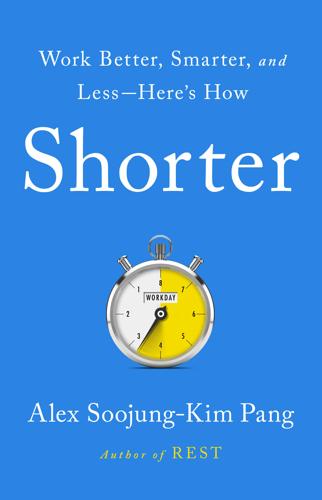
Shorter: Work Better, Smarter, and Less Here's How
by
Alex Soojung-Kim Pang
Published 10 Mar 2020
And “if I get a meeting invitation without an agenda,” he adds, “I have the ability to reject it.” For companies with remote workforces, thinking about when to hold meetings may end with meetings being almost entirely eliminated. Wildbit has employees in several time zones, and when the company moved to the four-day week, Natalie Nagele says, they shifted to more asynchronous communication. “A meeting at the beginning of my day is fine, but if it’s the middle of the day for somebody else, that’ll just rip their whole day apart.” “We have very few scheduled meetings” at Normally, cofounder and design leader Chris Downs says, and when they do, “we’ll have the meeting until what needs to get done is done.”
…
“We’re more efficient, we deliver more to our clients, and we’re earning more money,” Lorraine says. People have more time to go to the doctor, exercise, or simply recover from the week; sick days have dropped to “practically zero, which is unheard of in the call center world.” Clients posed no objections. Many of them have their own flexible or remote work systems and understand the need to experiment with working hours to maximize productivity while accommodating employees’ needs outside work. They also had little reason to complain: Patrick estimates that Pursuit’s efforts contributed $2.1 billion to their clients’ sales pipelines in 2018 and generated sales in thirty-four countries.
…
They look like similar options, and both offer employees greater autonomy and time management, but in practice they work quite differently. Companies that have successful flexible hours programs can build on their experience to ease the transition to a four-day workweek. “We’ve always had flexible working hours or remote working” at ELSE, Warren Hutchinson says, so by the time the entire company started its first trial of a four-day week, “we’d already sort of been experimenting with it, so we knew we could do it. It was just a question of changing the format and making it so that everybody could participate.” For other companies, coordinating teams working in different cities and time zones gives them a level of expertise with scheduling that helps them redesign the workday.

Company of One: Why Staying Small Is the Next Big Thing for Business
by
Paul Jarvis
Published 1 Jan 2019
Gloria Mark, a professor in the Department of Informatics at the University of California, found that for every interruption, it takes an average of twenty-three minutes and fifteen seconds to fully get back to the task. Fewer distractions means speedier work. Many large organizations have changed how they run fairly recently by adopting the startup ethos of flatter hierarchies, open workspace, multiple projects for every team member, and even asynchronous communication (like Slack). In these workplaces, employees no longer feel like they have one singular task to perform in their jobs, and they have to self-manage many of their responsibilities and their time. Even though these traits are part of being a company of one inside a larger organization, we need to unpack what it means to develop this autonomy and how best to do so.
…
There’s nothing wrong with finding the right size and then focusing on being better. Small can be a long-term plan, not just a stepping-stone. Is the Traditional Way of Doing Business Broken? Traditional ways of working—in offices with strict rules and corporate hierarchies—are giving way to gig-based, remote work with more autonomy. The business world is constantly being disrupted with new automations and technologies, and this is a good thing. Changes in how we work give us a chance to scale with the bare minimum in investments, people, and time. Traditionally, having a small business was thought of as a good starting point, or as what happens when a business finds only limited success.
…
In effect, hiring more people ended up not being the solution; instead, introducing more processes and structure helped fewer people accomplish more—while allowing them the autonomy to solve problems in their own way, using a common tool set. Autonomy can also be badly abused. The problem is not so much employees taking advantage of perks like flex hours or remote work, but leaders assuming that they need to give less direction. A leader’s job is to provide clear direction and then get out of the way. Even companies of one require direction and set processes—it’s this common constraint that allows creativity to thrive and goals to be met. This alignment has to be carefully orchestrated, not as binary autonomous/non-autonomous decisions, but as a balance between guidance and trust.